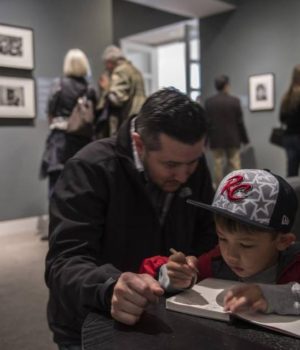The call to roundup Muslim men by many on the fringe is a nightmare of American history to repeat itself. Also not to mention the many lawsuits and the taxpayer money being flushed away that would bankrupt the US quicker then war – PB/TK
Sacramento observes 75th anniversary of Japanese American internment –
Sacramento’s Crocker Art Museum became a temple of living history Sunday as dozens of Japanese Americans forced into World War II internment camps and their children and grandchildren attended “A Day of Remembrance.”
The exhibit opened exactly 75 years after President Franklin Delano Roosevelt signed Executive Order 9066, which sent more than 120,000 Japanese Americans – the majority of them U.S. citizens – to remote detention camps.
The day-long event attracted several thousand people of all races. Highlights included Ansel Adams’ stark black-and-white photos of the Manzanar Relocation Center 10 miles north of Lone Pine in the Inyo County high desert and Canadian photojournalist Leonard Frank’s bleak images of several of the 10 incarceration camps in British Columbia, where 22,000 Japanese Canadians were forcibly relocated.
The photos, which will be exhibited through May 19, uncorked raw emotions among many older Japanese Americans who spent years behind barbed wire in some of America’s most unforgiving landscapes.
Harry Noguchi, 81, unfurled a long photograph of more than 200 children lined up at Tule Lake, a mile and a quarter above sea level in northeastern Siskiyou County.
“That’s me,” said Noguchi, identifying a defiant eight-year-old. “I had whooping cough,” he remembered.
Noguchi said he was “about to forgive America for this,” but has recently had his anger rekindled by President Donald Trump, who during his campaign told Time he did not know whether he would have supported or opposed sending Japanese Americans to internment camps.



















